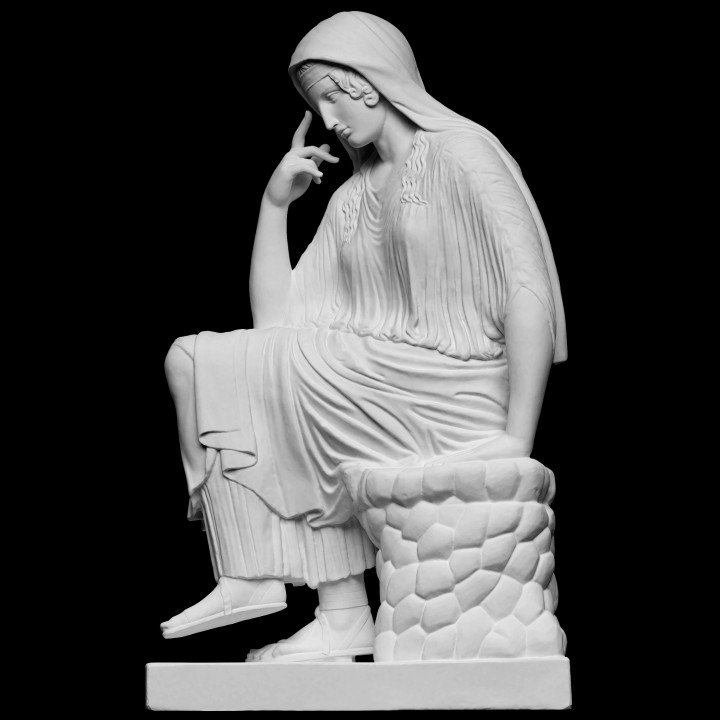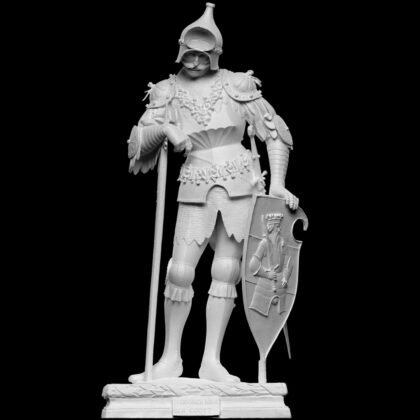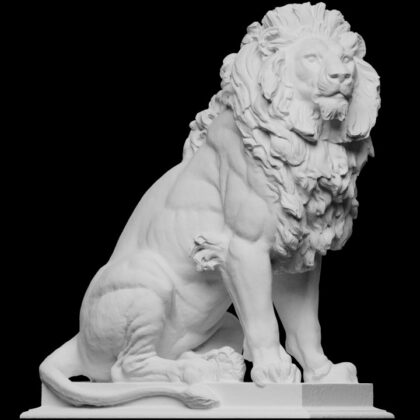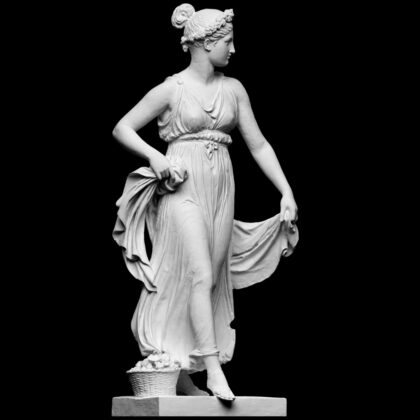Unlikely to really represent Penelope; more likely to be a funerary monument. Roman copy of Greek original. The copyist has exchanged the stool of the original for a rock and has given the figure the face of an androgynous youth. Heavily restored
Wearing a modest head cover (what Homer means by “veil”), she is seated on a stone wall, staring pensively at the ground, thinking of her husband. This is a typical posture in artistic representations of Penelope—legs crossed, looking downward, hand to her face (Figures 2.1, 19.1, 20.1). Roman copy (perhaps 1st century BC) of a lost Greek original, c. 460 BC.
| Afmetingen | N/B |
|---|




